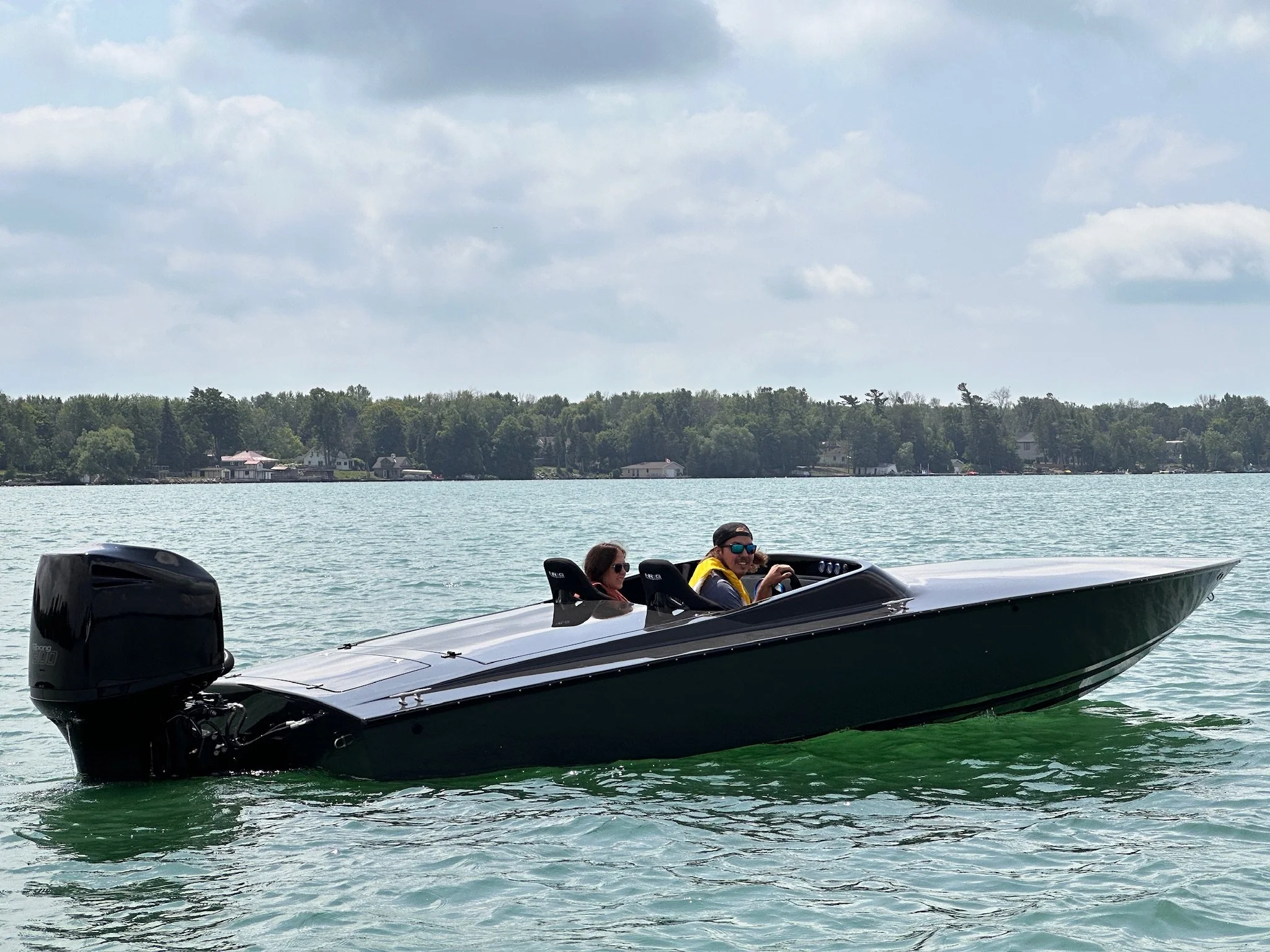Reduce Drag: Make Your Boat Faster and More Efficient
In the constant quest for more performance, there are few simple principles to keep in mind. The most basic one is efficiency. To make your boat go through, or ride on the water more efficiently is to make it faster. One key to accomplishing this is to reduce drag.
Weight Reduction and Balance
Reducing weight is a form of reducing drag. If you overload your boat with weight, you increase its displacement at lower speeds, and reduce lift at higher speeds. Removing unnecessary gear and objects is obviously the easiest way. After that, go through your boat, and see if you have anything else you can remove. An old stereo, extra tools, a convertible top. Look for old carpet, stuff stowed under the bow. Take a close look to see if you have any rotten floor material, or anything else holding water. Depending on the boat, some opt to remove, or lighten the floor upfront with a thinner material. Weight in front of you center of gravity has a greater effect than aft weight.
Any equipment or tools stowed is probably best strategically placed as far aft as possible, or on either side in order to balance the boat in relation to driver and passenger weight.
We've talked about it before, but drag can also be caused by your hull having an uneven surface, ranging from abrasions, to warping that may cause a hook, or rocker to the hull. In general, a smooth straight surface will be ideal. Hooks can force your bow down, increasing drag substantially, disabling your boat from getting any bow lift. This is key on the running surface of your boat. Link to blueprint article.
The Allison has a very sophisticated hull design. Straight, sharp edges, and balance are all factors in its performance. Just by changing the lower unit, engine height and a few other things, the boat gained substantial speed. Hulls like this can run the prop shaft above the pad, depending on application.
Now comes your gearcase which is causing drag. Finding the ideal engine height for your specific boat is key to reducing drag, thus improving speed. And, your gearcase can be responsible for how your boat handles at high speed. Your gearcase height is limited by your water pickup ability, your hull design, and your prop. By raising your engine,you open up the possibility of using a different prop. Some props become more efficient when run higher. If you don't have low water pickup, you still want to experiment with higher engine heights, watching you water pressure. And, if you are limited in height, then sometimes using a smaller diameter prop, or a three blade over a four blade can reduce drag. Experiment with as many as you can. Depending how fast your going, an inch or even less in height can increase rpm by 100 or 200. Here is a link to an article about gearcase design.
Your gearcase is a critical piece in how your boat performs, and reducing drag by running it higher out of the water. This is a Yamaha SHO 1.75 gearcase.
Part of engine height is setback. The easiest and most cost effective option is with a manual jack plate. If you're on a really tight budget, you can just use fixed setback brackets. Obviously, hydraulic is slick and the best overall, but heavier and more costly.
By moving your engine back, you are moving the cg back, and theoretically putting your prop in cleaner water. But the key is by having the engine further back, you get more bow lift with less trim, which is more efficient. And, sometimes the hull will be more stable, as the running surface and prop are further apart, the span of tension, or contact points is increased; almost like increasing the wheelbase on a car. The key is finding the balance, real cg, boat weight, engine weight and height, and prop design.
There isn't one answer either. You may purposely sacrifice all out top speed for rough water ability and having more of the boat on the water. Or, you may try to balance the boat as far back as you can, trying to get the most lift possible, squeezing out every mph. For boats that are achieving speeds in excess of 80 MPH, you might even consider a hatch to cover the rear seats, or a fabric tonneau cover that covers them, reducing wind drag. An air foil or cowl in front of the engine can also be effective.
Reducing drag in general improves efficiency. The most efficient boat will be the fastest boat theoretically. Spending a little bit of time removing dead weight, a basic blueprint of the hull, and changing the setback, prop shaft height and propeller can dramatically improve your top speed and overall efficiency.
Originally published 09/13/19
Props have a profound affect on drag, the diameter, blade design and the barrel are just some of the components of prop design that play a part in efficiency. Try different props, especially if you change other factors about your boat like engine height and weight.









